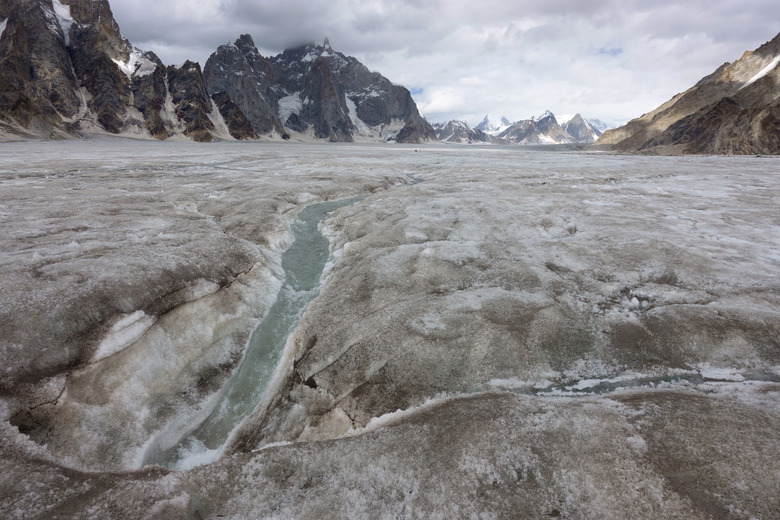Melting Ice Just Unearthed An Ancient Wolf Head – And It's A Bad Sign For Us
Some Siberians found a severed wolf head last summer.
Doesn't sound like that big of a deal, right? Surely people find wolf heads all the time. And they do! Just not ones that are 40,000 years old. That's right – a local Siberian man saw a wolf's head washed up on a riverbank, almost perfectly preserved after thousands of years of being buried in permafrost.
The man who discovered it had no idea it was so old, because it was so in tact. Unlike an old fossil, the head was instantly recognizable, thanks to tons of matted fur, snarling fangs and an unmistakable wolflike button nose.
When he turned it over to scientists, they were astonished to discover this ancient wolf walked planet Earth 40,000 years ago, during the Ice Age. They were also delighted to find that its brain was still preserved. Now, they're working on creating a 3-D model of that brain.
They're also excited to compare the ancient wolf's DNA to that of modern wolves, to learn more about how the species has evolved over tens of thousands of years. Already, they think that the size of this wolf head indicates the animals may have been larger than many modern-day wolves.
Melting Permafrost
Melting Permafrost
As exciting as this discovery is for learning about animal evolution, it also demonstrates the potential danger of permafrost that is melting at an alarming rate.
When people think of climate change melting ice, they tend to think of glaciers and polar bears. And while those are certainly melting, our planet's warming temperatures have led to permafrost melting in regions like Siberia, Alaska and Greenland.
Ancient severed wolf heads are maybe the only cool part about this melting, since when permafrost melts, it releases carbon and methane into the atmosphere. You know, two of the things we are actively trying to avoid releasing into the air to prevent the negative consequences of climate change. It's a vicious cycle – climate activists are working to reduce carbon emissions, but progress is slow. So temperatures continue to rise, causing permafrost to melt, which then releases dangerous amounts of carbon and methane.
One 2017 study put it this way: If climate change continues on pace and global temperatures rise more than 1.5 degrees Celsius, melting permafrost has the potential to release as many as 508 gigatons of carbon – all before human activity releases even more. That would bring temperatures to an additional 1.69 degrees Celsius by 2300, numbers that climate scientists agree would be catastrophically deadly.
It Gets Worse
It Gets Worse
Think that's bad? There's more. Melting permafrost can also unearth disease, nuclear waste and important agricultural storage.
Ever hear of the Doomsday Vault? It's a seed bank buried deep within a remote Norwegian island. Full of seeds and agricultural samples from around the world, it's mission is to act as a safety net should certain areas or countries lose seed samples thanks to natural disasters, government mismanagement, lack of funding or accidents.
Sounds like something that should ... stay vaulted, right? The problem is, it relies on frozen permafrost to keep it secure. In October 2016, nearby permafrost unexpectedly melted, leading to damage and millions of dollars of repair costs. Earlier this year, Norwegian officials remarked that they "couldn't trust the permafrost anymore."
Melted permafrost could also unearth outbreaks of the Spanish flu, anthrax and viruses from human and animal remains that had been buried deep within permafrost. The potential for danger to humans, animals and plants is grave, but at least we got to see a pretty cool ancient wolf head in the process.
Cite This Article
MLA
Dragani, Rachelle. "Melting Ice Just Unearthed An Ancient Wolf Head – And It's A Bad Sign For Us" sciencing.com, https://www.sciencing.com/melting-ice-just-unearthed-an-ancient-wolf-head-and-its-a-bad-sign-for-us-13719786/. 20 June 2019.
APA
Dragani, Rachelle. (2019, June 20). Melting Ice Just Unearthed An Ancient Wolf Head – And It's A Bad Sign For Us. sciencing.com. Retrieved from https://www.sciencing.com/melting-ice-just-unearthed-an-ancient-wolf-head-and-its-a-bad-sign-for-us-13719786/
Chicago
Dragani, Rachelle. Melting Ice Just Unearthed An Ancient Wolf Head – And It's A Bad Sign For Us last modified March 24, 2022. https://www.sciencing.com/melting-ice-just-unearthed-an-ancient-wolf-head-and-its-a-bad-sign-for-us-13719786/
